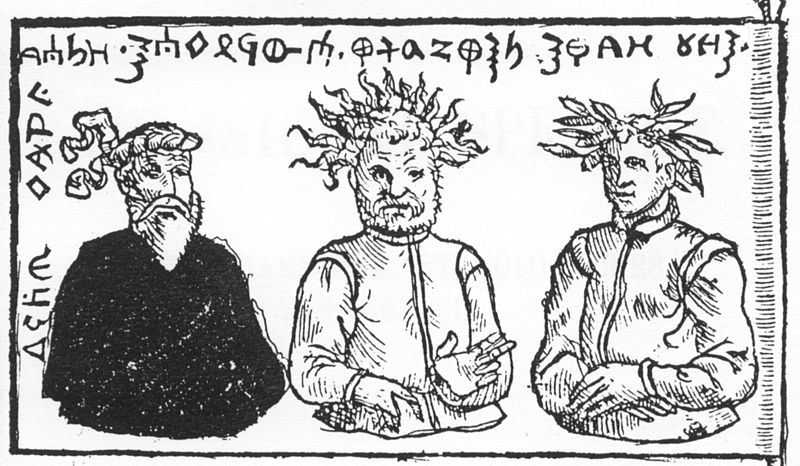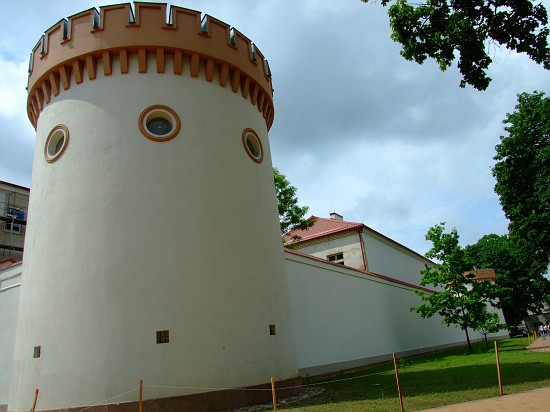|
Skalvians
The Scalovians ( lt, Skalviai; german: Schalauer), also known as the Skalvians, ''Schalwen'' and ''Schalmen'', were a Baltic tribe related to the Prussians. According to the ''Chronicon terrae Prussiae'' of Peter of Dusburg, the now extinct Scalovians inhabited the land of Scalovia south of the Curonians and Samogitians, by the lower Neman River ca. 1240. Geography This region is located at both sides of the river Memel north of Nadruvians and south of Samogitia. In the North-East it stretched to rivers Šešupė, Ežeruona and Jūra. In the East it bordered on Sudovia, in the North-West on river Minija, in the West on the Curonian Lagoon and in the South-West on river Gilija. The center were the towns of Rusnė, Ragainė and Tilžė. Name The meaning is uncertain: ''skalwa'' "splinter (living split off)" or ''skalauti'' "between waters". According to Prussian legends, the tribe's name is derived from one of the sons of King Widewuto named Schalauo. History The inhabitant ... [...More Info...] [...Related Items...] OR: [Wikipedia] [Google] [Baidu] |
Old Prussians
Old Prussians, Baltic Prussians or simply Prussians (Old Prussian: ''prūsai''; german: Pruzzen or ''Prußen''; la, Pruteni; lv, prūši; lt, prūsai; pl, Prusowie; csb, Prësowié) were an indigenous tribe among the Baltic peoples that inhabited the region of Prussia, at the south-eastern shore of the Baltic Sea between the Vistula Lagoon to the west and the Curonian Lagoon to the east. The Old Prussians, who spoke an Indo-European language now known as Old Prussian and worshipped pre-Christian deities, lent their name, despite very few commonalities, to the later, predominantly Low German-speaking inhabitants of the region. The duchy of the Polans under Mieszko I, which was the predecessor of the Kingdom of Poland, first attempted to conquer and baptize the Baltic tribes during the 10th century, but repeatedly encountered strong resistance. Not until the 13th century were the Old Prussians subjugated and their lands conquered by the Teutonic Order. The remaining Old Prus ... [...More Info...] [...Related Items...] OR: [Wikipedia] [Google] [Baidu] |
West Baltic Language
The Baltic languages are a branch of the Indo-European language family spoken natively by a population of about 4.5 million people mainly in areas extending east and southeast of the Baltic Sea in Northern Europe. Together with the Slavic languages, they form the Balto-Slavic branch of the Indo-European family. Scholars usually regard them as a single subgroup divided into two branches: Western Baltic (containing only extinct languages) and Eastern Baltic (containing at least two living languages, Lithuanian, Latvian, and by some counts including Latgalian and Samogitian as separate languages rather than dialects of the two aforementioned languages). The range of the Eastern Baltic linguistic influence once possibly reached as far as the Ural Mountains, but this hypothesis has been questioned. Old Prussian, a Western Baltic language that became extinct in the 18th century, has possibly retained the greatest number of properties from Proto-Baltic. Although related, Lith ... [...More Info...] [...Related Items...] OR: [Wikipedia] [Google] [Baidu] |
Ragnit
Neman (russian: Не́ман; german: Ragnit; lt, Ragainė; pl, Ragneta), is a town and the administrative center of Nemansky District in Kaliningrad Oblast, Russia, located in the historic region of Lithuania Minor, on the steep southern bank of the Neman River, where it forms the Russian border with the Klaipėda Region in Lithuania, and northeast of Kaliningrad, the administrative center of the oblast. Population figures: History ''Ragnita'' (from Old Prussian: ''ragas'', "spur"), founded in 1288, was a settlement of the Baltic (Old Prussian) tribe of Skalvians. It was contested by the Grand Duchy of Lithuania since its creation in the 13th century, and on April 23, 1289 it was conquered by the Teutonic Knights, who built a castle there between 1397 and 1409, which later became the seat of a ''Komtur''. Construction works were supervised by the Master of the Teutonic Order Konrad Fellenstein of Marienburg. A few decades later, a now-destroyed 25 meter guard tower w ... [...More Info...] [...Related Items...] OR: [Wikipedia] [Google] [Baidu] |
Western Baltic Languages
The Western Baltic languages were a group of Baltic languages that were spoken by Western Baltic peoples. Western Baltic is one of the two primary branches of Baltic languages, along with Eastern Baltic. It includes Old Prussian, Sudovian, Western Galindian, possibly Skalvian and Old Curonian. Attestation The only properly attested Western Baltic language of which texts are known is Old Prussian, although there are a few short remnants of Old Curonian and Sudovian in the form of isolated words and short phrases. Many Western Baltic languages went extinct in the 16th century while Old Prussian ceased to be spoken in the early 18th century. Classification The only languages securely classified as Western Baltic are Old Prussian and West Galindian, which could also be a dialect of Old Prussian. Most scholars consider Skalvian to be a Westen Baltic language or dialect. Another possible classification is a transitional language between Western and Eastern Baltic. Sudovian is ... [...More Info...] [...Related Items...] OR: [Wikipedia] [Google] [Baidu] |
Scalovia
Scalovia ( lt, Skalva, , , ) was the area of Prussia originally inhabited by the now extinct tribe of Skalvians or Scalovians which according to the ''Chronicon terrae Prussiae'' of Peter of Dusburg lived to the south of the Curonians, by the lower Nemunas river, in the times around 1240. Jodocus Hondius mentions in 1641 that in "Sclavonia liegen Ragneta, Tilsa, Renum, Liccovia, Salavia, Labia, Tapia, Vintburg, Christader, Bayria, Cestia, Norbeitia, Bensdorff / Angenburg and Dringofordt" (Atlas Minor, :114) The centre of Scalovia was supposed to be Ragnit (Ragneta)(Raganita)(Rogneta) and in the west it bordered the Curonian Lagoon as far as the town of Russ and with Samogitia up north and with Nadrovia in the south. The origin of the name according to Prussian chronicles is derived from one of the Prussian brothers name Schalauo and resembles the name of the town Salavia. The inhabitants can be traced back to burial grounds with cremated remains and occasional graves of horses. ... [...More Info...] [...Related Items...] OR: [Wikipedia] [Google] [Baidu] |
Neman (town)
Neman (russian: Не́ман; german: Ragnit; lt, Ragainė; pl, Ragneta), is a town and the administrative center of Nemansky District in Kaliningrad Oblast, Russia, located in the historic region of Lithuania Minor, on the steep southern bank of the Neman River, where it forms the Russian border with the Klaipėda Region in Lithuania, and northeast of Kaliningrad, the administrative center of the oblast. Population figures: History ''Ragnita'' (from Old Prussian language, Old Prussian: ''ragas'', "spur (topography), spur"), founded in 1288, was a settlement of the Balts, Baltic (Old Prussians, Old Prussian) tribe of Skalvians. It was contested by the Grand Duchy of Lithuania since its creation in the 13th century, and on April 23, 1289 it was conquered by the Teutonic Knights, who built a castle there between 1397 and 1409, which later became the seat of a ''Komtur''. Construction works were supervised by the Master of the Teutonic Order Konrad Fellenstein of Marienbu ... [...More Info...] [...Related Items...] OR: [Wikipedia] [Google] [Baidu] |
Nadruvians
The Nadruvians were a now-extinct Prussian tribe. They lived in Nadruvia (alternative spellings include: ''Nadruva'', ''Nadrowite'', ''Nadrovia'', ''Nadrauen'', ''Nadravia'', ''Nadrow'' and ''Nadra''), a large territory in northernmost Prussia. They bordered the Skalvians on the Neman (Nemunas) River just to the north, the Sudovians to the east, and other Prussian tribes to the south and west. Most information about the clan is provided in a chronicle by Peter von Dusburg. History In 1236 Peter of Dusburg wrote that Nadruvia was the location of Romuva, the sacred center of Baltic religion. From Romuva Kriwe, the chief priest or "pagan Pope", ruled over the religion of all the Balts. No other sources mention the place. Scientists have considerable doubts if such an organized structure existed. As the northernmost clan, Nadruvians were conquered last by the Teutonic Knights, a German crusading military order. In 1230 the Knights set up their base in the Chełmno Land in Poland a ... [...More Info...] [...Related Items...] OR: [Wikipedia] [Google] [Baidu] |
Prussia (region)
Prussia (Old Prussian: ''Prūsa''; german: Preußen; lt, Prūsija; pl, Prusy; russian: Пруссия, tr=Prussiya, ''/Prussia/Borussia'') is a historical region in Europe on the south-eastern coast of the Baltic Sea, that ranges from the Vistula delta in the west to the end of the Curonian Spit in the east and extends inland as far as Masuria. Tacitus's ''Germania'' (98 AD) is the oldest known record of an eyewitness account on the territory and its inhabitants. Pliny the Elder had already confirmed that the Romans had navigated into the waters beyond the ''Cimbric peninsula'' (Jutland). Suiones, Sitones, Goths and other Germanic people had temporarily settled to the east and west of the Vistula River during the Migration Period, adjacent to the Aesti, who lived further to the east. Overview The region's inhabitants of the Middle Ages have first been called ''Bruzi'' in the brief text of the Bavarian Geographer and since been referred to as Old Prussians, who, beginning in ... [...More Info...] [...Related Items...] OR: [Wikipedia] [Google] [Baidu] |
Widewuto
Widewuto (also ''Viduutus'', ''Vidvutus'', ''Witowudi'', ''Waidewut'', ''Vaidevutis'') was a legendary king of the pagan Prussians who ruled along with his elder brother, the high priest (''Kriwe-Kriwajto'') Bruteno in the 6th century AD. They are known from writings of 16th-century chroniclers , Simon Grunau, and Lucas David. Though the legend lacks historical credibility, it became popular with medieval historians. It is unclear whether the legend was authentically Prussian (i.e. recorded from Prussian mythology) or was created by Grunau (possibly inspired by Biblical Moses and Aaron), though Lithuanian researchers tend to support its authenticity. Names Widewuto's name is found in literature in different forms: Veijdenutus, Vydevutis, Vidowuto, Viduutus, Waidewut, Wejdewut, Wenedut, Widewuto, Widewutte, Widiwutus, Wydowudo, Wydowudus, Widowuto, Wydowuto, Widowutus, Witoud, Witoudo, Witouito, Witowudus, Witowuto, Wotowudo, Vaidevutis (modern Lithuanian emendation). As for his bro ... [...More Info...] [...Related Items...] OR: [Wikipedia] [Google] [Baidu] |
Tauragė
Tauragė (; see other names) is an industrial city in Lithuania, and the capital of Tauragė County. In 2020, its population was 21,520. Tauragė is situated on the Jūra River, close to the border with the Kaliningrad Oblast, and not far from the Baltic Sea coast. Although first mentioned in 1507, Tauragė received its city charter only in 1924 and its coat of arms (a silver hunting horn in a red field) in 1997. Notable buildings in the city include the castle (19th c. Russian Empire Customs) (currently housinTauragė Region Museum , 19th c. Post office, beautiful buildings from the 20th c. inter-war period, several churches: the Lutheran (built in 1843), the Catholic (1904) and Orthodox (1933). Lithuanian, Swedish and Danish factories operate in the city. Nowadays Tauragė is famous for its car markets and adventure parks.
|
Peter Von Dusburg
Peter of Dusburg (german: Peter von Dusburg; la, Petrus de Dusburg; died after 1326), also known as Peter of Duisburg, was a Priest-Brother and chronicler of the Teutonic Knights. He is known for writing the ''Chronicon terrae Prussiae'', which described the 13th and early 14th century Teutonic Knights and Old Prussians in Prussia. Life Peter's dates of birth and death are unknown, although he lived from the second half of the 13th century until the first half of the 14th century. Initially it was thought he was from Duisburg, Germany, and in some texts he is referred to as "Peter of Duisburg". Other research indicates he may have instead come from Doesburg, now in the Netherlands.Pollakówna, Marzena. ''Kronika Piotra z Dusburga'' ("The Chronicle of Peter of Dusburg"), Acta Poloniae Historica, Wrocław, Warszawa, Kraków, vol. 19, pp. 69-88. 1968; In 1324, probably while in Königsberg,Christiansen, pg. 224 Peter began working on his ''Chronicon terrae Prussiae'' on behalf of Gra ... [...More Info...] [...Related Items...] OR: [Wikipedia] [Google] [Baidu] |





